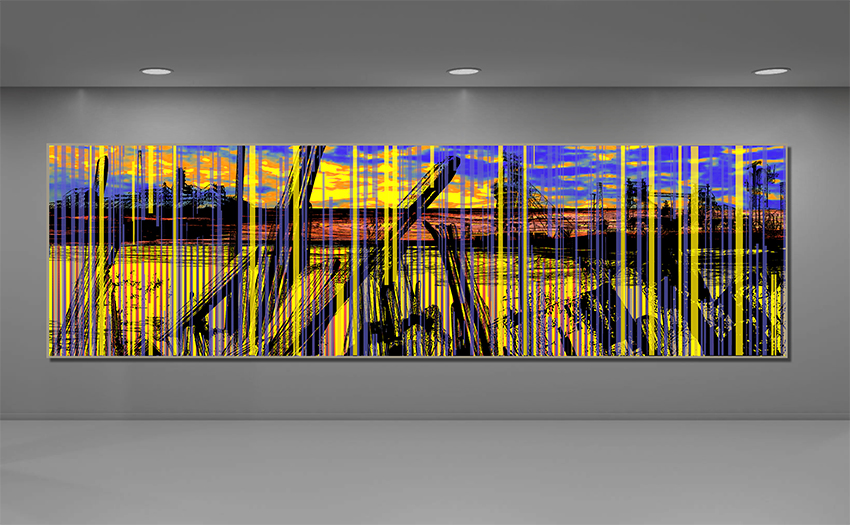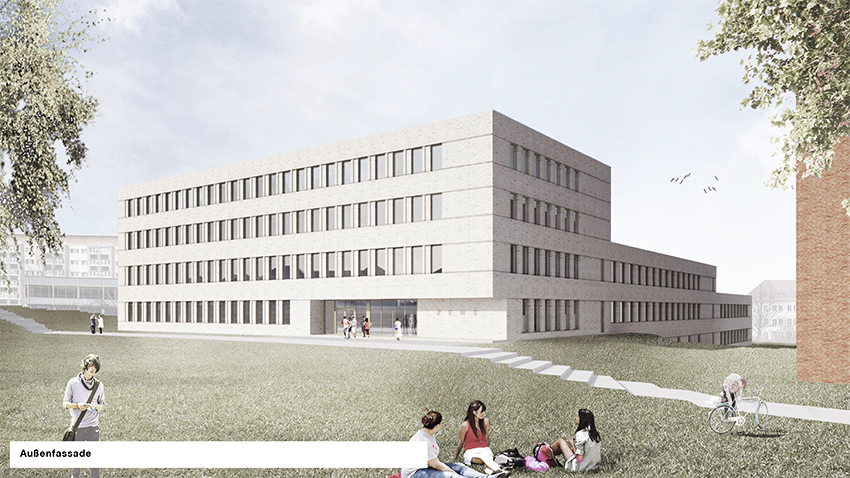2nd Place
illuminated glass artwork 200 x 700 cm (78.74 x 275.59 in)
design “Art in Architecture” for the construction project Center for Efficient High-Temperature Material Conversion, TU Bergakademie Freiberg (ZeHs)
non-public One-Phase Competition with Preceding Application Procedure
developer: State Enterprise Saxon Real Estate and Construction Management (SIB)
2019
budget: € 98,270
partner: Glass Studio Peters Paderborn
“Spectral Splendour” is a 7-meter-long and 2-meter-tall artwork (78.74 x 275.59 in) located in the foyer of ZeHs. The placement of the glass artwork on the long wall of the foyer creates an additional source of light within this space, along with the illusion of an additional window. As a result, the subsequent laboratory and research rooms for employees and visitors are opened up not only spatially, but also conceptually through the light and transparency of the glass.
Light and temperature are directly linked in a causal chain. Therefore, within the work “Spectral Splendour,” light holds significant importance. Here, light serves as an expression of both technical and material states of warmth, as well as a representation of future and innovation.
Additionally, the various refractions and reflections of the glass colors in the foyer create an enchanting atmosphere that seeks an intriguing contrast with the architecture of the building.
The motif of the glass artwork draws inspiration from both the history of Freiberg and the blast furnaces of ore processing. In the background, there is an abstract surreal landscape featuring these blast furnaces, which is intersected by the crystalline structure of minerals in the foreground. This arrangement also results in an interplay of ‘above’ and ‘below,’ creating a reversal of the micro to macrocosm relationship. The old mines and blast furnaces recede into the background both spatially and temporally. The examination of the forefront mineral structures becomes the core of the image, reflecting one of the tasks of ZeHs: the analysis and determination of crystal structures in their application to new innovative material processes.
The color strips breaking through the image are meant to symbolize, on a conceptual level, a fundamental method of spectral analysis in materials research. The use of the color tones red-yellow in contrast to blue-purple also underscores the temperature variations of the institute’s high-temperature processes.
The vitality, continuous progress, and flow of research and education at the Institute for Efficient High-Temperature Material Conversion at TU Freiberg are emphasized in the flowing landscape between the architectures.
The title “Spectral Splendour” encapsulates all these interpretations: the methodology of analysis, temperature, light, and the innovation of new processing methods for technology, industry, and humanity.


